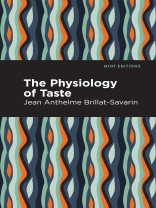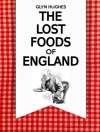Originally published in 1825, Physiology of Taste is a culinary masterpiece that gives insight into the history and practice of eating, both together and alone . The author uses a unique storytelling style to detail the sensual art of fine dining.
Jean Anthelme Brillat-Savarin believes that what you eat is a reflection of who you are. Through years of observation and study, he created a book detailing the art and science of food. He takes a philosophical approach that applies common epicurean ideas. He discusses the influence of taste and smell, as well as the power of flavor. Through anecdotes and essays, the author explores the principles of gastronomy and the hierarchy of foods within a diet. Many of the book’s musings are still relevant and maintain their value in the modern world.
Jean Anthelme Brillat-Savarin understood the critical impact of food on the body and mind. With Physiology of Taste, he illustrates the effects of cooking and consuming a meal. Eating is a social convention that’s also essential to survival. It’s an artform and science that can resonate with all.
With an eye-catching new cover, and professionally typeset manuscript, this edition of Physiology of Taste is both modern and readable.
Since our inception in 2020, Mint Editions has kept sustainability and innovation at the forefront of our mission. Each and every Mint Edition title gets a fresh, professionally typeset manuscript and a dazzling new cover, all while maintaining the integrity of the original book.
With thousands of titles in our collection, we aim to spotlight diverse public domain works to help them find modern audiences. Mint Editions celebrates a breadth of literary works, curated from both canonical and overlooked classics from writers around the globe.
Giới thiệu về tác giả
Jean Anthelme Brillat-Savarin (1755–1826) held several notable positions including lawyer, teacher and politician. Yet, he’s best known for his passion and promotion of the culinary arts. Born in France, Brillat-Savarin studied highbrow subjects like medicine and law but was captivated by cooking. In an effort to elevate gastronomy, he released his most famous work–Physiology of Taste. Published in 1825, it was the first book of its kind to explore the mental, physical and emotional connection of food.












